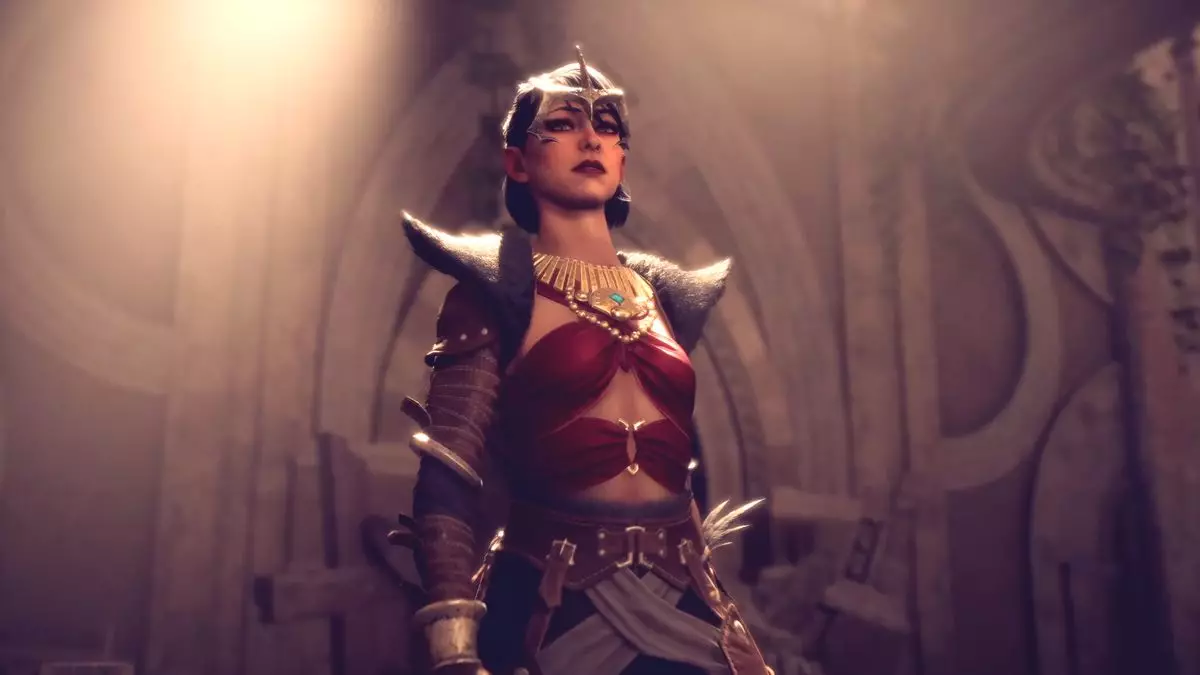In the realm of video games, narrative plays a pivotal role in shaping immersive experiences that resonate with players. David Gaider, a noteworthy narrative designer known for his work on the first three installments of the acclaimed Dragon Age series, had a transformative vision for character development. His reflections on the iconic character Morrigan reveal not just the shaping of a compelling narrative but also the nuances involved in voice casting. The process illuminates how the convergence of creative direction and serendipity can result in a character as layered and celebrated as Morrigan.
Morrigan, the enigmatic Witch of the Wilds, draws inspiration from various mythological and literary sources. Gaider cited influences including the legend of Morgan le Fey, a figure steeped in intrigue and darkness, and Delirium from Neil Gaiman’s Sandman, emphasizing that Morrigan was conceived as a character grappling with a cynical desire for connection. The imaginative leap from scholarly influences to a relatable, flawed character showcases Gaider’s commitment to delivering a complex narrative ripe for exploration. This transformation speaks volumes about the creative process, showing how characters evolve beyond their initial conceptual framework.
The casting of Claudia Black as the voice of Morrigan is a serendipitous twist that highlights the unpredictable nature of character development in the gaming world. Gaider mentions that the original casting team set out to find a Middle Eastern actress, initially considering Shoreh Aghdashloo for Morrigan, which underscores the importance of match-making between character identity and voice talent. When Aghdashloo’s commitments shifted, the team faced a dilemma—one that could have altered Morrigan’s trajectory significantly. Enter Claudia Black, whose foray into voice acting was fueled by a remarkable audio tape of her rendition of Sir Mix-A-Lot’s “Baby Got Back.”
This unusual choice of audition material may have raised eyebrows, yet it embodies the boundless creativity and spontaneous joy often needed in the arts. Black’s interpretation, laden with a playful yet gritty tone, resonated with Gaider, showcasing the necessity for risk-taking in both casting and performance. The authenticity brought by Black, described as having a raw, raspy voice reminiscent of “smoking three packs a day,” became integral to establishing Morrigan’s character.
Despite initial resistance encountered by Gaider in championing Claudia Black’s casting, it is a testament to the power of belief in creative vision. Once the team embraced her performance, the synergy between voice talent and character identity blossomed. Black’s ability to weave warmth and vulnerability into Morrigan’s cynicism brought depth to the character, allowing players to connect with her struggles and complexities. This moment is a reminder of how art sometimes requires voicing ideas that may seem too radical or unconventional at first, only to reveal their brilliance with time.
The anecdote about Gaider’s light-hearted comparison of Black to Helena Bonham Carter illustrates the camaraderie that can flourish in creative settings. It reflects the value of personal connection in collaborative processes and how humor can lighten the often intense atmosphere of game development. Gaider’s fond memory serves as an emblem of shared effort and miraculous creativity that undeniably contributed to Morrigan’s status as a central pillar of Dragon Age: Origins.
The cultural impact of Morrigan extends beyond the confines of the original game. Black’s reprisal of the role in the latest installment, Dragon Age: The Veilguard, not only revitalizes the character but also acknowledges the herculean work that went into crafting her original portrayal. Despite not being a companion in this installment, Morrigan’s allure remains strong—an emblem of the timeless nature of well-crafted characters. Gaider’s reflection reveals that, for him, Morrigan transcended her initial influences and became an emotional anchor for players navigating the trials of Thedas.
The genesis of Morrigan involves a remarkable blend of artistic vision, fortuitous casting choices, and the chemistry between creator and performer. The journey from concept to voice mirrors the broader narrative of game development where dreams, unexpected auditions, and fierce creativity converge to create legendary figures that endure in the hearts of players. Morrigan stands not merely as a character within a game, but as an iconic representation of the power of storytelling within the medium of video games.


Leave a Reply